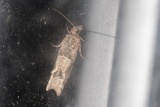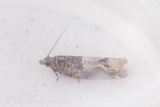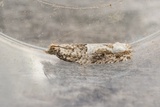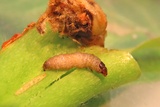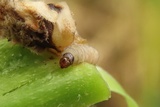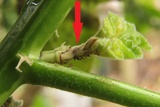Crocidosema plebejana Zeller, 1847 Species
Last modified: June 20, 2025, 12:03 p.m.
This cosmopolitan species is very rare in Belgium.
Details
- Classification
- Family: Tortricidae > Subfamily: Olethreutinae > Tribus: Eucosmini > Genus: Crocidosema > Species: Crocidosema plebejana
- Vernacular names
- Wereldbladroller (NL), Southern Bell, Tree-mallow Tortrix (EN), Baumwoll-Triebspitzenwickler (DE)
- First mention in Belgium
- Janmoulle E. 1962a. Espèces nouvelles pour la faune belge (suite). — Lambillionea 62(3–6): 39–40, 41. On page 39.
- Status
-
Native
Distribution
Imago
Wingspan 12–16 mm. It has a short, forward-pointing tuft on the head. Males are dark brown to black with a conspicuous white ocellus and dorsal patch. The pre-tornal triangle pattern is characteristic. Females are pale brown to tan with a dark basal patch that does not extend to the costa. Males lack a forewing costal fold.
Caterpillar
Late instar larvae are approximately 8–10 mm in length. The abdomen varies in colour from whitish to yellowish-brown to dark reddish-brown. The head is yellowish-brown to dark brown with black posterolateral margins. The prothoracic shield is dark yellowish-brown. Pinacula are small and body colored. An anal comb is present with 4–6 teeth.
Flight periods
The adults have been observed from early June till late November in one or two generations a year.
Observed on
- Host plant (species):
- Lavatera arborea
- Host plant (genera):
- Malva, Althaea and Hibiscus
The larva feeds on Lavatera arborea, Althaea, Malva, Hibiscus and some other related plants.
Habitat
Can be seen everywhere.
